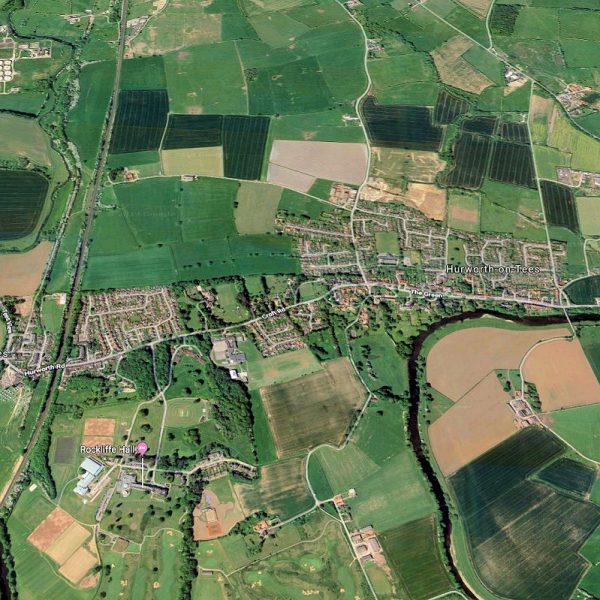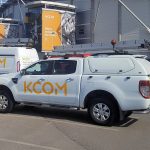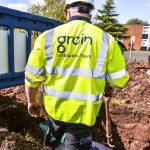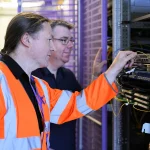Confusion Over Openreach’s Fibre Rollout in Durham Villages

Residents and businesses in the neighbouring villages of Hurworth and Hurworth Place in Durham (England) have been left confused after the local Darlington Borough Council (DBC) and Openreach (BT) issued conflicting statements on the status of their “fibre broadband” (FTTC / FTTP) network coverage and future rollout plan.
At present Openreach’s (BT) deployment in the area is being supported by public investment from the £34m+ Digital Durham project, which has already helped to raise the coverage of “superfast broadband” (24Mbps+) ISP networks across the county to around 96%.
Hopes were recently raised in the two villages after Openreach’s engineers turned up to start extending their fibre optic network into the area, although locals quickly complained (here) after they noted that the operator only seemed to be connecting up new build homes on the edge of the village (i.e. missing out many of the existing properties).
Advertisement
So far, so familiar. When operators deploy into a new area (village, town, city etc.) they don’t always cover every single premises. More often than not some will simply fall outside of their economic model (commercially unviable) and require a bigger public subsidy. The build may also take place in phases over a period of months or years, which means that the operator will often come back later to infill deeper into the area.
However confusion soon erupted after the DBC said it was their understanding that Openreach “will continue to extend and upgrade fibre technology in Hurworth” and that properties would be connected by the end of 2020. Meanwhile Openreach said it would be too expensive to connect every property and they instead encouraged locals to gather together in order to help co-fund their own build (Community Fibre Partnership).
An Openreach Spokesperson said:
“Due to the cost and logistics of getting fibre technology from the main fibre route to individual premises or street cabinets there will still be some premises in the vicinity which will not be upgraded within this current phase of work. We would encourage those households to consider signing up to our Community Fibre Partnership Scheme which has central government funding available.”
A quick visit to the Digital Durham website, and a little searching via their postcode checker, reveals that large central areas of both villages are not currently included in the rollout plan (it’s a lot more than “some premises“). “There are currently no plans to make fibre based broadband available to this postcode,” was a common result. We should point out these villages aren’t small and several thousand people live within them.
We suspect that the reason for this confusion may stem from the proposed plan for a Phase 3 extension to Openreach’s existing contract in Durham (here), which was due to go out to tender but we haven’t seen an update from the county council on this since the summer. The related consultation closed in July 2019 and noted that around 31,500 premises were still in need of help to access superfast broadband.
Advertisement
The most recent update states: “We are now working on the launch of an Invitation to Tender (ITT) to suppliers to bid for the opportunity of a new contract to deliver further superfast broadband coverage. The three councils intended to benefit from this procurement are Durham County Council, Gateshead Council and Sunderland City Council. We hope to have further information by April 2020.”
Public funding of around £10m to £12m looks likely to go toward Phase 3 and most of this stems from “underspend” (£7m) in the original contract and a little from gainshare (£2m) as a result of strong service take-up in intervention areas. The council has previously indicated that it sees a mix of FTTP, fixed wireless and 4G mobile broadband being in the frame.
Overall it sounds like DBC have either made a big assumption on their expectation of coverage by the end of 2020 or they know more than the public have so far been told about the future rollout strategy. Certainly if the villages are to be covered then nobody seems to have told Openreach or they’re going to use a different operator.
Little wonder that so many people find it hard to figure out what’s actually going on with all of these conflicting signals.
Advertisement
Mark is a professional technology writer, IT consultant and computer engineer from Dorset (England), he also founded ISPreview in 1999 and enjoys analysing the latest telecoms and broadband developments. Find me on X (Twitter), Mastodon, Facebook, BlueSky, Threads.net and Linkedin.
« LonsdaleNET to Extend 1Gbps Broadband in Rural Cumbria UK
RED Warning Given to Cityfibre’s FTTH Build in Milton Keynes »






















































Post code DL22BU gas no fibre at all, 149 properties. Documents and emails from Openreach stated that work would start in the second quarter of 2019. Informed in June 2019 the schedule of work had been cancelled. Tried two providers of 4g mobile broadband routers and none can sustain a usable mb/s, BT gave quoted a minimum guaranteed speed of 0.00 mb/s.the properties are only 10 years old. There is no hope of a speedy internet connection within the next 5 years